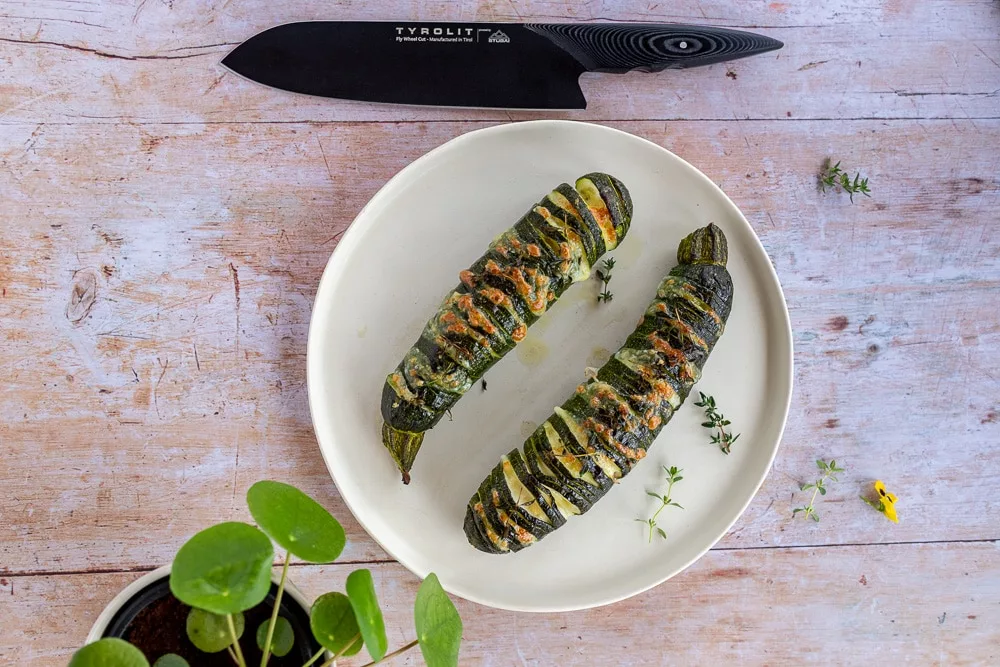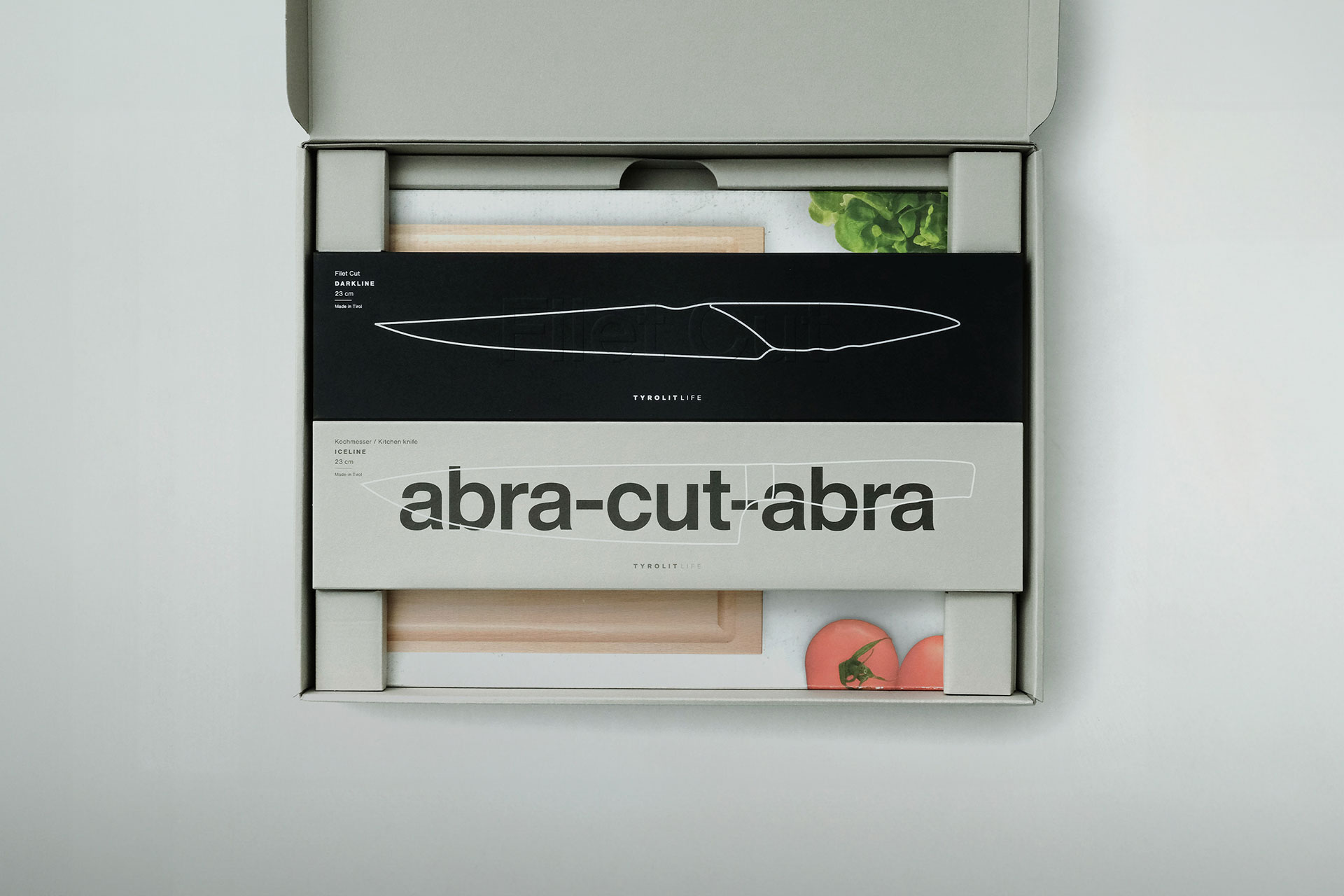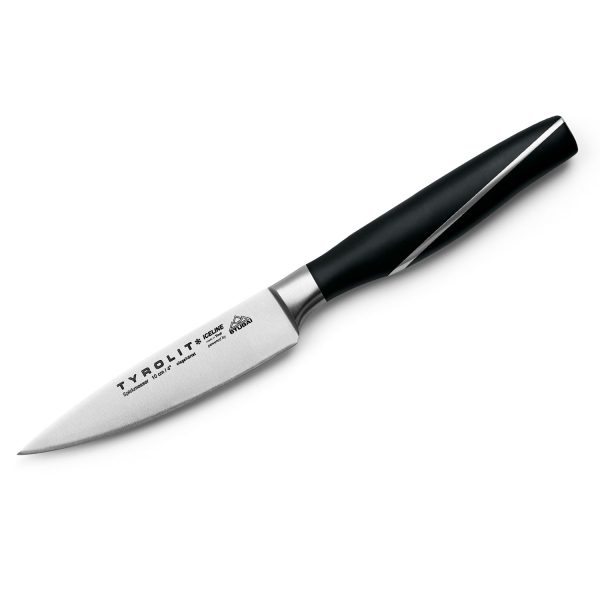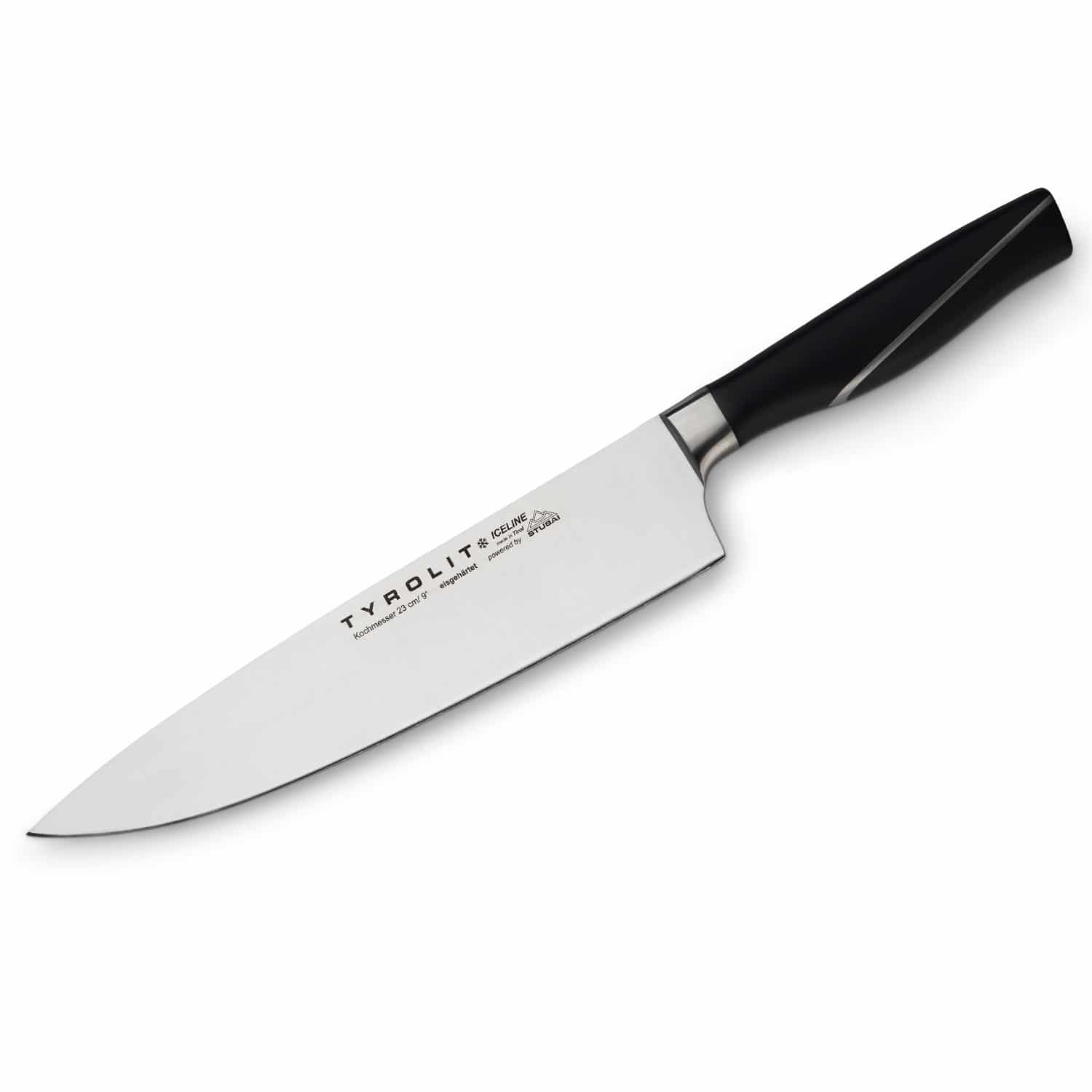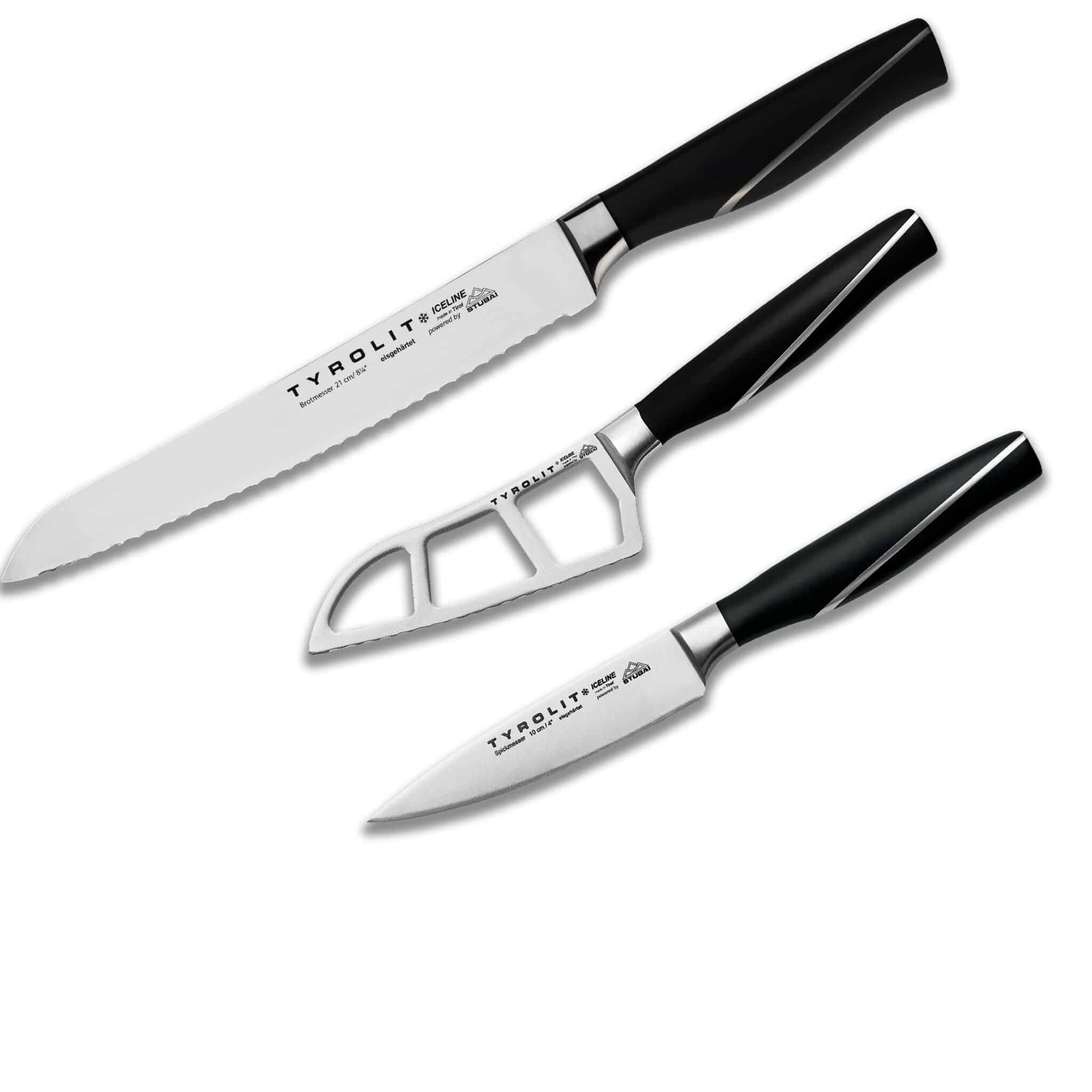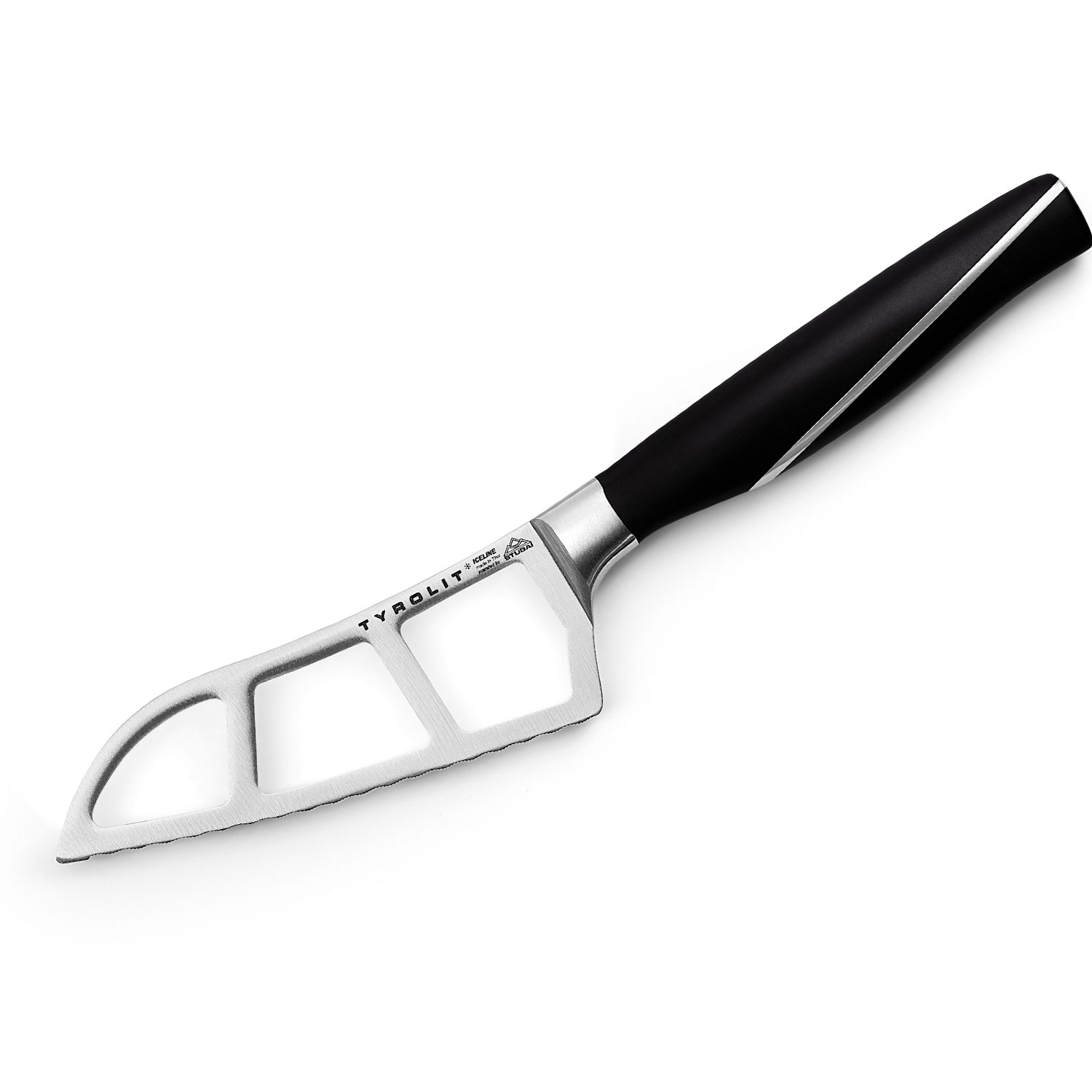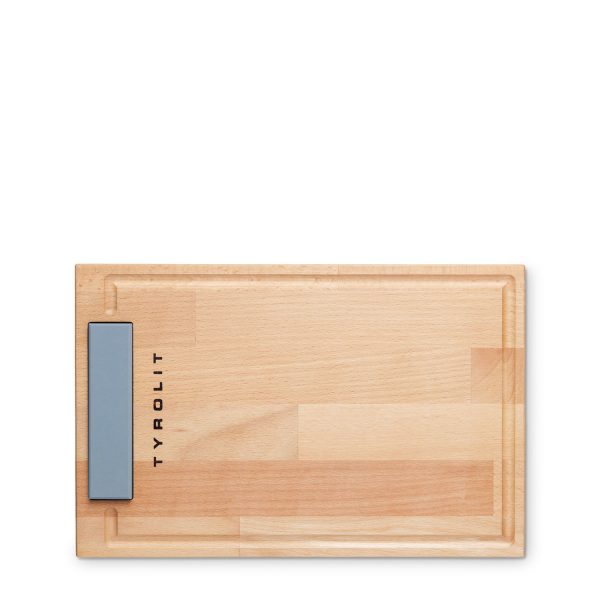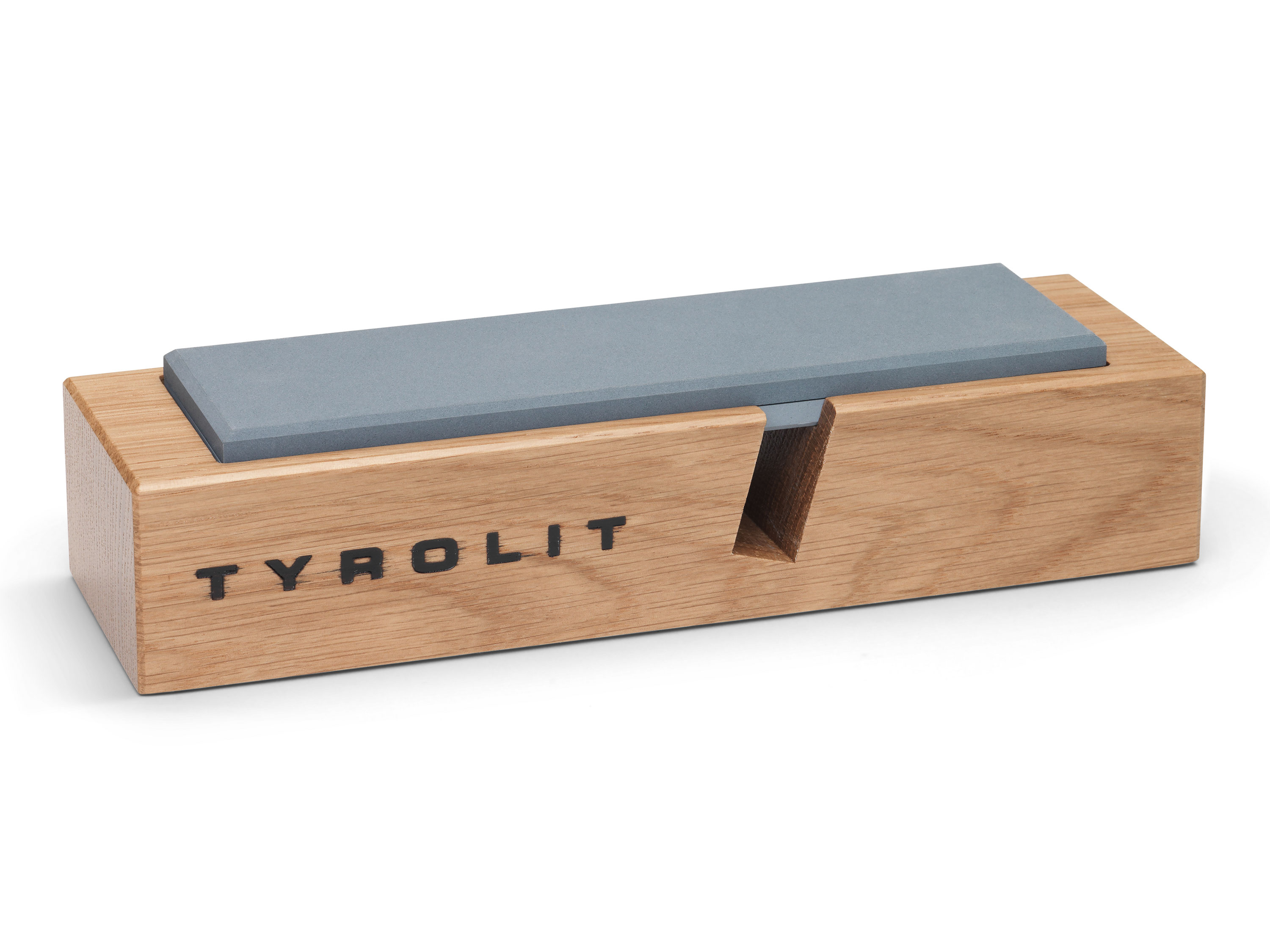The Cheese Knife – An indispensable knife for cheese lovers
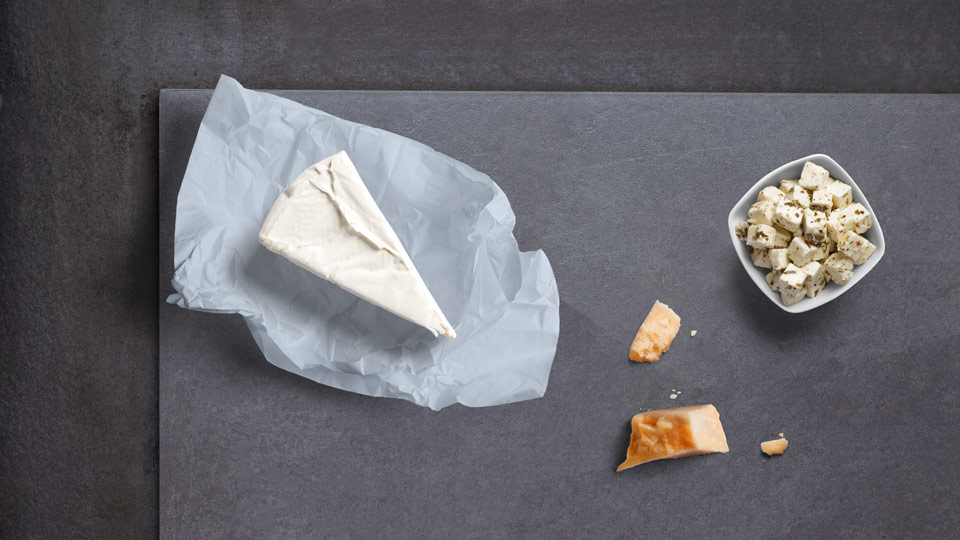
Cheese is not only a delicacy but also a product with an incredible variety of textures and flavors. The history of the knife has led to various specializations in its use. Therefore, the right cheese knife is a useful tool that truly brings out the full diversity of cheese. Depending on the blade length and the edge, this kitchen knife allows for the optimal cutting of cheese without damaging its structure or unnecessarily crushing the cheese.
A sharp blade also ensures precise cuts that can make the difference not only visually, but also taste-wise. It is this combination of craftsmanship and enjoyment that makes the world of cheese slicing so fascinating.
Cheese Varieties and Their Unique Features
The world of cheese is diverse and fascinating. Each variety, whether it’s a small piece of cheese or an entire cheese wheel, tells its own story—from the terroir where the milk was produced, to the artistry of the cheesemaker.
There is the mild, semi-solid sliced cheese that melts on the tongue and the robust sliced cheese that is versatile in the kitchen. Some cheeses have characteristic holes that are not only visually striking, but also influence the taste and texture.
Delving into the secrets and peculiarities of the different cheeses is an adventure for the palate and a journey of discovery for all the senses.
Which knife for which cheese?
Cheese is a culinary experience that comes in countless varieties and textures. From creamy soft cheese to strong hard cheese, each variety offers a unique taste experience. But not only in taste, but also in consistency, the different cheeses differ considerably from each other.
This necessitates specific cutting tools to optimally present and savor each type of cheese. Hence, distinguishing between types of cheese is crucial not only for cheese aficionados but for anyone eager to maximize their enjoyment of cheese. In the sections that follow, you’ll learn more about which knife is best suited for which cheese.
Hasselback Zucchini with Mozzarella Filling
Discover Hasselback zucchini with mozzarella filling, a delicious dish that is easy to prepare and will delight everyone.
Hard cheese knife
Imagine you have a ripe Emmental or a spicy Gouda in front of you. These hard cheeses need a special tool for the perfect cut. This is where hard cheese knives come into play.
These are specially designed to easily penetrate the resistant character of hard cheese. A Parmesan knife, for example, with its sturdy blade, is ideal for breaking the crumbly and firm core of the Parmesan.
For cheeses such as Gorgonzola, which maintain a certain creaminess despite their hardness, a cheese cleaver is often the top choice for achieving clean cuts.
Soft cheese
knife
The creamy Camembert, melting Mozzarella, or buttery Brie – all are examples of soft cheese that call for gentle handling during cutting. A soft cheese knife features special recesses and a unique blade shape designed to prevent the cheese from sticking to the knife.
Anyone who has attempted to slice a soft Tilsiter or cream cheese with a standard knife will immediately notice the difference. The issue often lies in the cheese sticking to the knife, making it difficult to release and hence challenging to serve neatly. With the right tool, clean cuts are easily achieved, enhancing the presentation and serving experience.
Materials and Construction of Cheese Knives
Cheese knives differ both in their construction and in the materials used. We will take a look at the materials from which cheese knives are usually made.
Stainless steel – the heart of the cheese knife
Stainless steel is considered one of the preferred materials for the production of cheese knives. Thanks to its robustness and durability, it is ideally suited for the demanding task of cheese slicing.
Another advantage of stainless steel is the ability to craft the blade in various lengths, ensuring it aligns perfectly with different types of cheese. Moreover, stainless steel enables the use of serrated edges, which guarantee a clean and precise cut, especially when slicing soft cheeses.
Another distinctive feature of many cheese knives are the holes in the blade. They allow effortless gliding through softer cheeses and prevent them from sticking to the knife.
Gifting knives – Is it bad luck to give a knife as a gift?
Despite superstition, you can give knives in good conscience. Learn all about it in this article.
The choice of handle – wood, plastic or stainless steel?
This part of the knife plays a crucial role in its handling and functionality. Wooden handles provide a warm, natural feel and go great with rustic cheese boards. They are not only aesthetically pleasing, but also offer good grip.
Plastic handles, on the other hand, are often lighter and easier to care for, making them particularly practical for everyday use.
Stainless steel handles are another option characterized by their durability and hygiene. Whether in a cheese knife set or as a unique piece, choosing the right handle contributes significantly to the cutting experience.
What types of cheese knives are there?
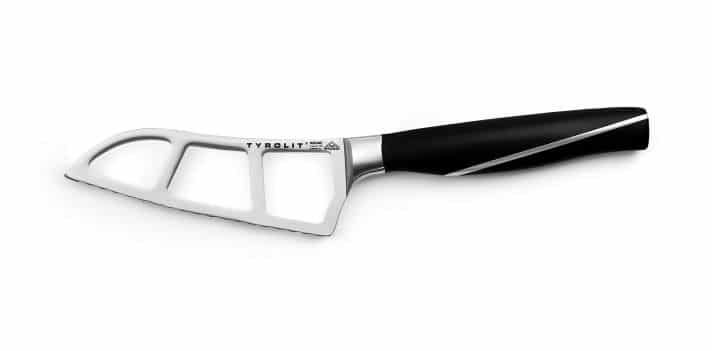
There are a variety of cheese knife shapes, each designed for specific cheeses and cutting requirements. Many cheese knives have combined various shapes in order to be able to cut and present cheese in the best possible way. Here are some of the most common cheese knife shapes:
- Cheese knife with straight blade
- Cheese Knife with Serrated Edge
- Cheese knife with fork tip
- Cheese knife with wide blade
- Cheese knife with holes
- Cheese Plane – Plane
- Cheese knife with alveoli
- Double-Handled Cheese Knife
The choice of the right cheese knife depends on the type of cheese and personal preferences. A well-equipped cheese knife set usually includes a variety of knife shapes, enabling the cutting and serving of a wide range of cheese types.
Cheese Knife Sets and Accessories
Not all cheeses are the same, nor are the knives with which they are cut. This is where cheese knife sets come into play, offering a broad array of specialized knives designed to present each cheese variety in the best possible way.
A typical cheese knife set could include a knife for creamy Brie, another for crumbly Parmesan, and a third for semi-firm Cheddar. These sets are not only practical but are often beautifully designed as well. Although there’s a persistent superstition against giving knives as gifts, cheese knives make an ideal present, making it definitely worthwhile to circumvent this superstition with a gift voucher in the knife shop instead of the actual knives
Supplementary utensils
What would the perfectly cut piece of cheese be without the right cutting board as a base? High-quality cutting boards are not only aesthetically pleasing, but also protect the blades of your knives.
But there are additional kitchen aids that elevate the cheese experience to a new level. For those who cherish perfectly sliced cheese, cheese planes and serrated cheese slicers are essential tools. Only with the appropriate equipment does cutting, shaving, and presenting cheese transform into a true delight.
What is the right care for your cheese knife?
Proper care of your cheese knife is crucial to maintaining its functionality and sharpness for years to come. It is not only important to clean the knife carefully after each use, but also to ensure that it is stored in a safe place. Regular sharpening and hand cleaning are important factors that increase the lifespan of your cheese knife. A well-maintained cheese knife always guarantees you precise and clean cuts. Always remember: care for and clean knives!
How can you store your cheese knife optimally?
Optimal storage of your cheese knife plays a central role in ensuring its longevity and efficiency. First of all, the knife should always be clean and dry before putting it away to avoid rust or other damage. For high-quality storage, experts recommend special knife blocks – for example, a magnetic knife block – or magnetic knife strips. They protect your blades and at the same time ensure safety in your kitchen.
Tyrolit Life offers many useful tips and products for proper storage to ensure that your cheese knife always remains in the best condition. It is equally important to keep the knife away from extreme temperature fluctuations and avoid direct sunlight.
A well-stored cheese knife not only ensures excellent cutting results, but also shows appreciation for food and your kitchen utensils.
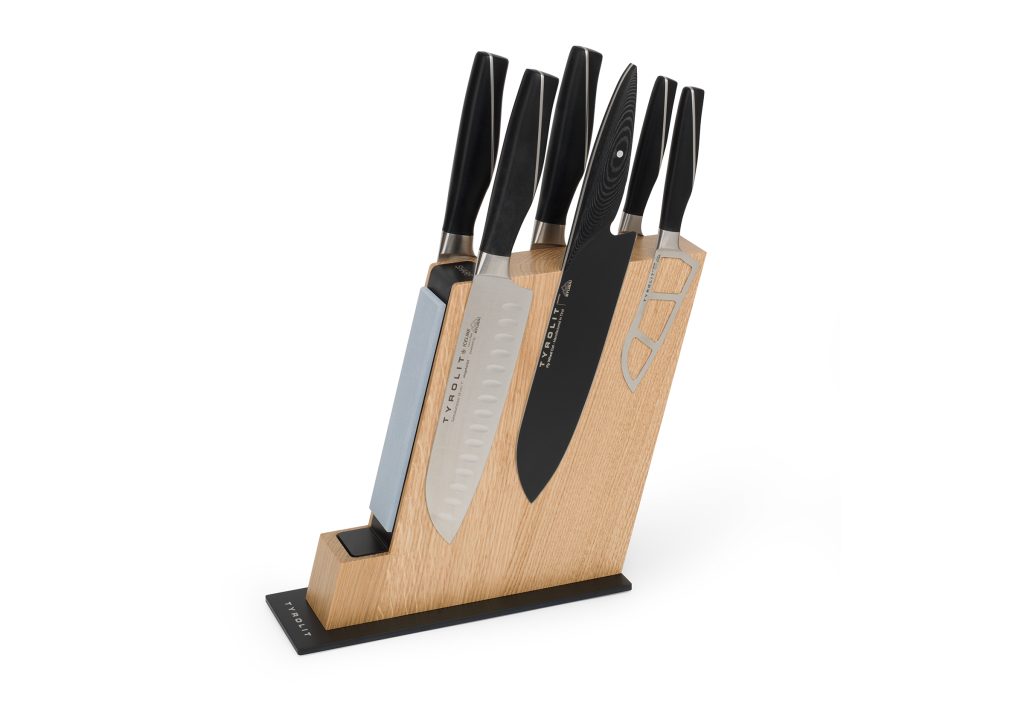
How to sharpen cheese knives?
A sharp cheese knife is essential for precisely cutting the cheese and fully releasing its flavor. But how can you effectively sharpen your cheese knife?
With Tyrolit Life, you have a trusted partner at your side when it comes to sharpening knives. The high-quality grinding stones and knife sharpeners (with an already preset grinding angle of 15 degrees) are specially designed for different knife types and materials and therefore also offer an optimal solution for your cheese knife. Simply follow Tyrolit Life's detailed instructions to sharpen your knife in just a few steps.
In addition to sharpening stones, Tyrolit Life also provides special sharpening kits and tools to simplify the process even further. It's advisable to regularly evaluate the sharpness of your knife and sharpen it as needed. A well-sharpened cheese knife facilitates not only easier slicing but also ensures a clean cut that retains the cheese's texture and flavor. With the products and advice from Tyrolit Life, your cheese knife will always remain in pristine condition, primed for your next cheese indulgence.
Types of Whetstones – Materials, Shapes, and Uses
Choosing the right whetstone or sharpening stone is anything but trivial: it is only by regularly sharpening knives that they retain their sharpness. In order to provide an overview here, we will introduce you to different types of grinding stones in this article. In addition, we will show you how we at Tyrolit, as long-standing abrasive experts, have further developed the classic sharpening stone into our innovative knife sharpeners. Read more!
How much does a very good cheese knife cost?
The cheese knife from the Iceline series by Tyrolit Life is very good value for money. Thanks to the large recesses, the Tyrolit Life cheese knife allows you to cut all soft cheeses without the cheese sticking to the blade.
The Tyrolit Life cheese knife is manufactured in collaboration with the Tyrolean knife manufacturer Stubai and meets the highest quality standards. It is made from multiple ice-hardened stainless steel, providing it with both durability and stability. Its high-performance micro-serrated edge allows the knife to glide through cheese effortlessly – for the ultimate cheese enjoyment. You can purchase the Tyrolit Life cheese knife online.

